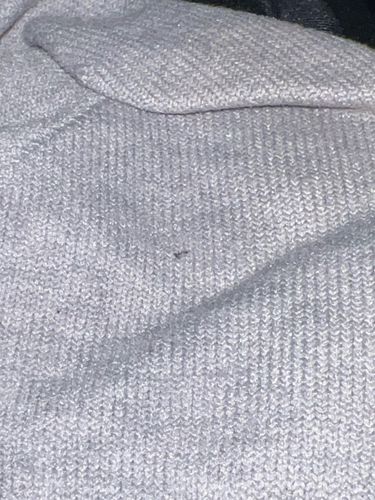Carpet Beetle (likely Varied Carpet Beetle or Black Carpet Beetle)
Scientific Name: Genus: Anthrenus (e.g., Anthrenus verbasci for Varied Carpet Beetle) or Attagenus (e.g., Attagenus unicolor for Black Carpet Beetle). Species cannot be definitively determined from this image.
Order & Family: Order: Coleoptera, Family: Dermestidae
Size: Adults typically range from 2-5 mm (0.08-0.2 inches) in length. Larvae can be slightly larger, up to 5-6 mm (0.2-0.24 inches).

Natural Habitat
Indoors: Carpets, rugs, upholstered furniture, closets, attics, museums, pet bedding, stored food products. Outdoors: Flowers where adults feed on pollen and nectar. They prefer dark, undisturbed areas for larval development.
Diet & Feeding
Larvae feed on a wide variety of animal products, including wool, silk, fur, feathers, leather, museum specimens (dried insects, animal skins), natural fibers in carpets and clothing, as well as dried food products and pet food. Adult carpet beetles feed on pollen and nectar from flowers.
Behavior Patterns
Carpet beetle larvae typically feed in dark, undisturbed areas. Adults are attracted to light and are often found near windows. Adults often feed on nectar and pollen outdoors. Females lay eggs on suitable food sources. Larvae are known for their slow movement and often curl up when disturbed.
Risks & Benefits
Risks: Carpet beetles are significant household and museum pests. Their larvae can cause considerable damage to natural fibers in clothing, carpets, upholstered furniture, and stored museum specimens. They do not bite or sting humans, but some individuals may experience allergic reactions to their shed hairs. Benefits: In certain natural environments, adult carpet beetles contribute to pollination. Their larvae can also play a role in decomposition outside of human dwellings.
Identified on: 9/2/2025